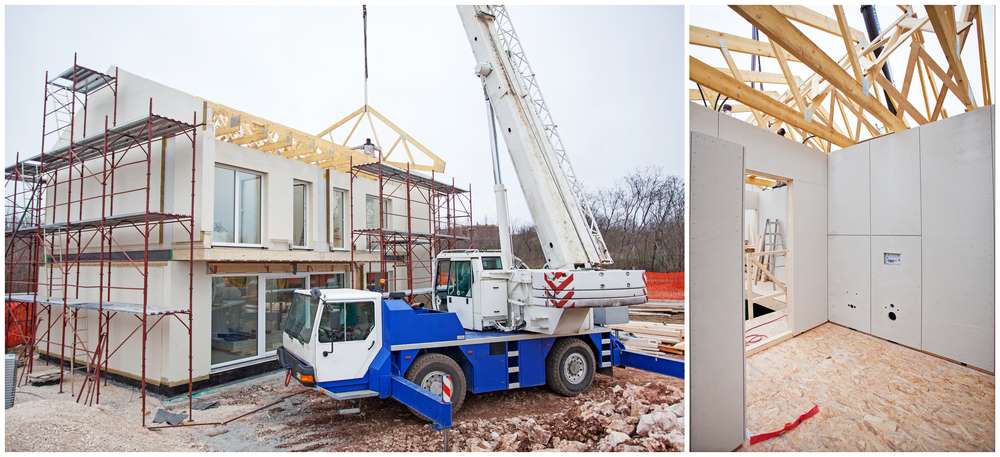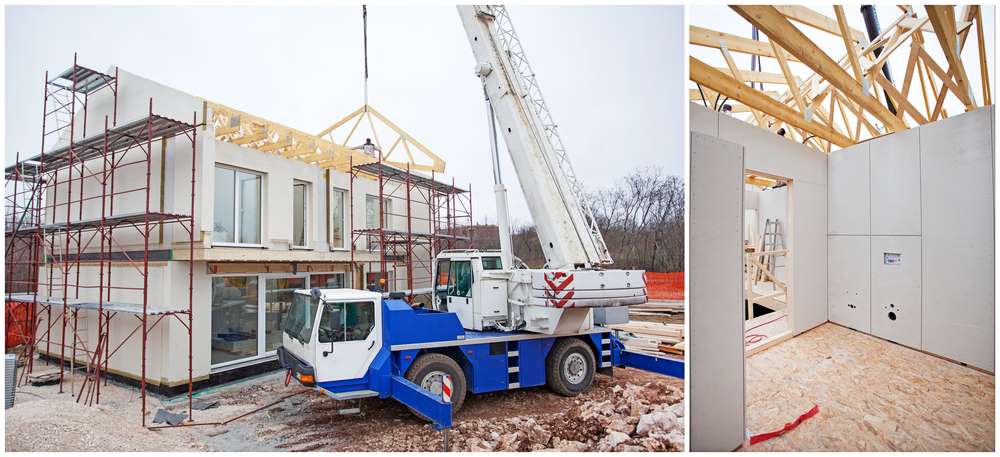Modular construction is a process in which buildings are manufactured off-site in factories under strict quality controls but using the same building codes and standards as conventional construction methods. These constructions are made in modules or small parts, which are transported to the construction site and assembled. Modular construction is becoming more popular mainly due to its quick completion, cost-effectiveness and efficiency.
Modular construction types:
1. Permanent Modular Construction (PMC)
2. Relocatable buildings
Relocatable Buildings (RB) are partial or complete sets, manufactured in a manufacturing unit with a modular construction process. Although they are relocatable, these buildings meet building codes and state regulations. Relocatable buildings are designed to be reused multiple times and transported to multiple locations; they are not permanently attached to real estate, but are installed in accordance with manufacturer guidelines and local codes.
Some common applications include offices on construction sites, schools, medical clinics and retail outlets. RBs offer ease of relocation, quick installation, low-cost reconfiguration, flexibility, and accelerated depreciation for accounting purposes.
Benefits of Modular Construction
1. Faster construction
Modular construction projects are completed 30 to 50% faster than those with conventional construction methods. This is because modular construction can proceed simultaneously with site and foundation work.
2. Elimination of weather delays
60-90% of works are completed in a closed factory environment, which mitigates the impact of unfavorable weather conditions. With conventional construction methods, work often must be completely suspended on days with adverse weather conditions.

3. Quality Construction
Off-site construction allows for more effective application of quality and safety guidelines. Building materials are protected from the elements during all stages of construction, which is a common cause of imperfections in outdoor projects. Modular buildings are completed to the same regulations, codes and materials as conventional buildings.
4.Flexibility
Many modular buildings can be dismantled and relocated for new purposes, reducing the demand for raw materials and energy use needed for construction. Even if the project used Permanent Modular Construction, the recovery of materials and modules is simpler than in normal construction.
5. Less material waste
Waste is eliminated through recycling and inventory control. Construction materials are also protected from the weather, as everything is stored inside the factory. Modular construction also makes it easier for construction workers to prevent waste, as there is greater control over project conditions.
6. Air Quality
Factory-controlled settings allow materials to remain dry during all phases of construction. Therefore, the level of moisture retained in new construction is reduced, improving air quality. This helps control mold, dust mites, and other organisms that thrive on moisture.
7.Security
Working indoors allows for a safer environment, reduces risks and dangers present on construction sites. With conventional construction methods, work often must be carried out at height or in uncomfortable positions where accidents are more likely.
8.Strength
Modular buildings are generally stronger than site-built structures because each module is designed to withstand transportation and lifting. Once together, the modules are securely joined together into a complete, integrated assembly.
9. Reduces interruptions
Since approximately 80% of the work is done off-site, modular construction allows business owners to continue working while renovations are being done. Modular construction also reduced disruption to buildings surrounding the project site.
10.Eco-friendly
In addition to reducing waste, modular construction is a market leader in the use of ecological materials. A wider range of materials becomes available when the construction process can be completed under controlled factory conditions.
11. Economical
Accessibility is a fundamental feature of modular construction. When several similar parts are made at once, cost and time savings are achieved through economies of scale. Modular construction is especially useful for projects with many identical buildings, as modules can be produced in series.
12.Acoustics
The modules are designed as self-contained units and can be soundproofed to block noise once assembled.
Disadvantages of modular construction
The main disadvantages of modular construction apply to the housing sector and are summarized below.
Size
The modules must be transported from the factory to the construction site, and this must be planned correctly. The size and properties of each element must be considered to determine a method of transportation that does not cause damage. In the case of prefabricated houses, this can be a disadvantage because the rooms tend to be smaller than in conventional houses.
Financing
When financing modular homes, banks typically issue a loan that goes through two phases. These are known as construction-to-permanent loans. In many cases, homeowners cannot obtain a traditional bank loan until construction of the home is complete. Financing the project in advance becomes a challenge in this case.
Land Restrictions
In some locations, local authorities may not allow the construction of modular homes. Therefore, it is important to know local laws before deciding to purchase.
Looking for a custom, cost-effective modular building project?
Conclusion
Modular construction delivers structurally strong buildings in less time than conventional construction methods. It also ensures high levels of quality control, reducing site disruption and vehicle traffic. Another benefit of modular construction is that it improves overall worker safety.
It is important to consider all construction methods to determine which technique is best suited for your project. Offsite construction is often chosen during the early stages of project planning to avoid further redesign. However, this does not stop the owner from redesigning a building originally intended for local construction into a modular version. If your main concern is using more sustainable construction methods, modular construction is definitely a technique to consider – it provides a controlled environment that reduces waste.

